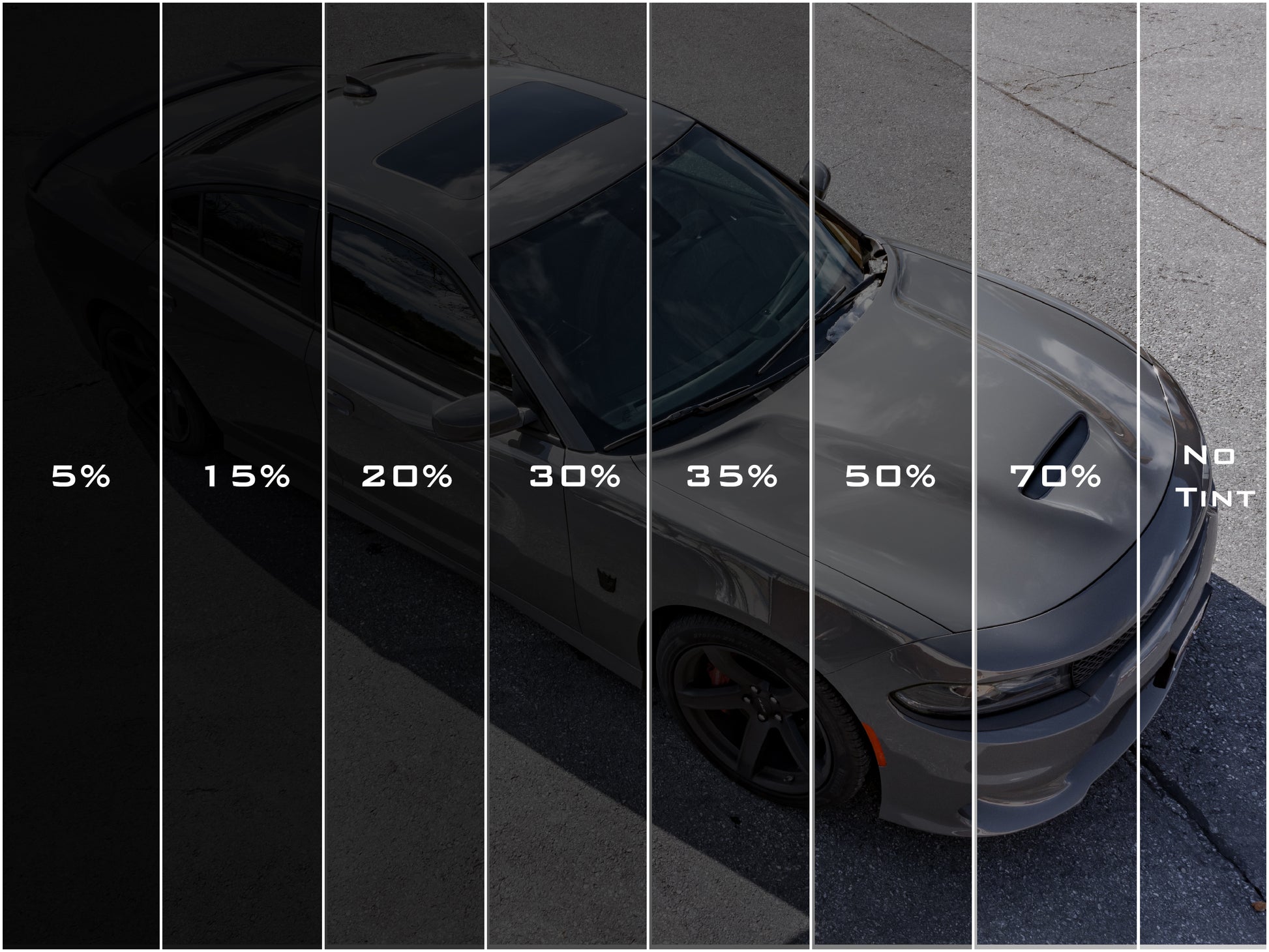Automobile Window Tinting: Boost Your Auto's Style and Personal privacy
Automobile Window Tinting: Boost Your Auto's Style and Personal privacy
Blog Article
Window Tinting Rules and Guidelines: What You Need to Know Before Tinting Your Vehicle
Prior to continuing with window tinting for your lorry, it is vital to acquaint yourself with the varied legislations and guidelines that control this technique across different states. These regulations determine the permissible degrees of color darkness, frequently determined by visible light transmission (VLT) percents, and consist of particular specifications for front windshields targeted at ensuring roadway safety. Furthermore, certain territories may use medical exemptions for people with qualifying problems. Comprehending these intricacies can save you from possible legal implications, but what are the certain regulations in your state?
Summary of Home Window Tinting Rules
Home window tinting legislations are often subject to variation throughout different jurisdictions, reflecting local laws and safety factors to consider. These legislations determine the acceptable levels of tint darkness and reflectiveness on car home windows, making sure that drivers maintain adequate visibility while additionally protecting against hazardous UV rays and heat.
A lot of regulations classify window tinting based upon the Visible Light Transmission (VLT) portion, which suggests the quantity of light that can travel through the home window. Typically, reduced VLT percentages symbolize darker colors. Legislations often differentiate between the front, side, and rear home windows, with more stringent restrictions related to the front windscreen to boost safety and security for both the vehicle driver and other road customers.
Additionally, some jurisdictions enforce restrictions on the reflectivity of the tint, preventing excessive glare that could impair presence. Exceptions to these regulations may exist for individuals with particular clinical problems needing added sunlight protection. Compliance with home window tinting guidelines is important, as violations can lead to fines, obligatory removal of the color, and possible rises in insurance coverage premiums. It is important for vehicle proprietors to acquaint themselves with neighborhood laws before continuing with window tinting installments.
State-by-State Tint Rules
Understanding the details window tinting laws in each state is essential for vehicle proprietors seeking to abide by the legislation. Each state in the U.S. has established its very own set of policies regulating window tinting, which can vary substantially. These regulations usually determine the allowable levels of color darkness, the kinds of home windows that can be tinted, and any kind of medical exemptions that might apply.
For instance, states like The golden state have rigorous limitations on tint darkness for front windows, while others, such as New Mexico, may allow darker tints. Furthermore, specific states mandate specific visibility percents for various home windows, consisting of the windscreen, front side windows, and back windows. It is vital for automobile proprietors to familiarize themselves with their state's regulations to prevent possible fines or charges.
Furthermore, some states might call for a qualification sticker to be positioned on colored windows, indicating compliance with state laws. Failing to follow these laws not just risks legal repercussions yet can likewise impact security and presence while driving. Lorry owners ought to perform detailed research study or consult local authorities to make certain full understanding and compliance with state-by-state color guidelines.
Allowed Tint Types and degrees
Several car proprietors may be surprised to find out that enabled color levels and types differ extensively across various states. Each state has established its very own regulations pertaining to the acceptable darkness and reflectivity of window color, often determined by Visible Light Transmission (VLT) percentages. VLT describes the quantity of light that can go through the colored home windows; therefore, a reduced percentage suggests a darker color.

Furthermore, the kinds of color products permitted can differ, with some states banning mirror-like or metallic coatings. It is important for vehicle owners to acquaint themselves go to website with their state's details laws to guarantee compliance. Non-compliance can cause penalties, mandatory removal of the color, or other lawful effects, making it critical to recognize these policies prior to proceeding with installation.
Medical Exceptions for Tinting
While not all states provide allowances for clinical exemptions relating to home window tinting, those that do acknowledge the need for particular individuals to boost presence and convenience as a result of medical problems. Various clinical problems, such as lupus, skin cancer cells, and specific eye disorders, can provide individuals specifically conscious sunshine. Subsequently, these people might need darker tints to secure themselves from dangerous UV rays and glare.

It is crucial to keep in mind that despite having a clinical exemption, there may still be constraints on the degree of tint permitted. Compliance with state legislations ensures that individuals are both safeguarded and within legal limits. Those thinking about medical exceptions should contact their neighborhood Department of Motor Vehicles or comparable authority to understand the procedures and requirements essential to get an exemption efficiently.
Charges for Non-Compliance
Falling short to conform with window tinting legislations can cause substantial penalties, which differ by state. Police are encouraged to provide citations for automobiles that do not follow the defined tinting regulations. These fines generally consist over here of penalties, which can vary from moderate total up to numerous hundred dollars, relying on the seriousness of the offense and the state concerned.
In some territories, duplicated offenses might result in escalating penalties or additional penalties, such as required court looks. Non-compliance may necessitate the removal of prohibited tinting, commonly at the owner's expenditure. In extreme situations, habitual offenders may encounter suspension of their car registration till compliance is accomplished.
Additionally, insurance effects may develop from getting several citations for home window color violations. Insurance providers may see such violations as an indicator of riskier behavior, potentially resulting in raised premiums or problem in coverage.
To prevent these charges, it is crucial for car proprietors to familiarize themselves with their neighborhood home window tinting legislations and ensure that their lorry complies (Window Tinting). This positive technique not just prevents legal ramifications but also promotes road security
Final Thought

A lot of regulations classify home window tinting based on the Visible Light Transmission (VLT) percentage, which suggests the amount of light that can pass with the window. Compliance with home window tinting laws is critical, as infractions can result in fines, mandatory removal of the tint, and potential rises in insurance costs.Recognizing the specific window tinting laws in each state is essential for vehicle proprietors seeking to comply with the law. These regulations frequently determine the allowed levels of color darkness, the types of home windows that can be tinted, and any kind of medical exceptions that may use.
For instance, states like California have rigorous constraints on color darkness for front windows, while others, such as New Mexico, might enable darker colors.
Report this page